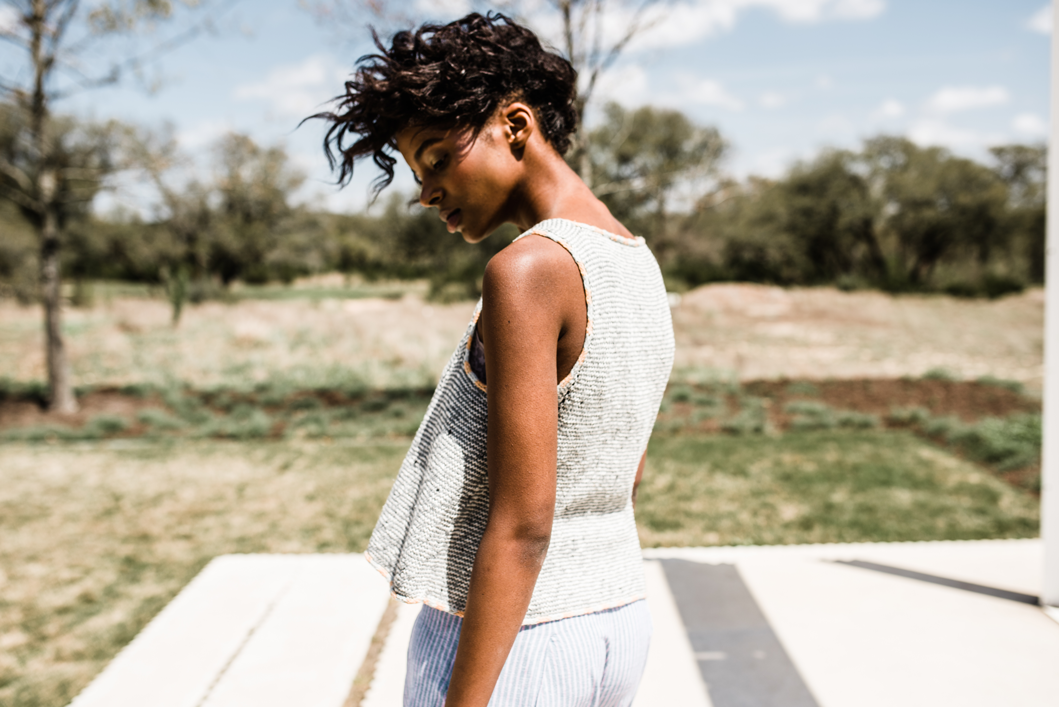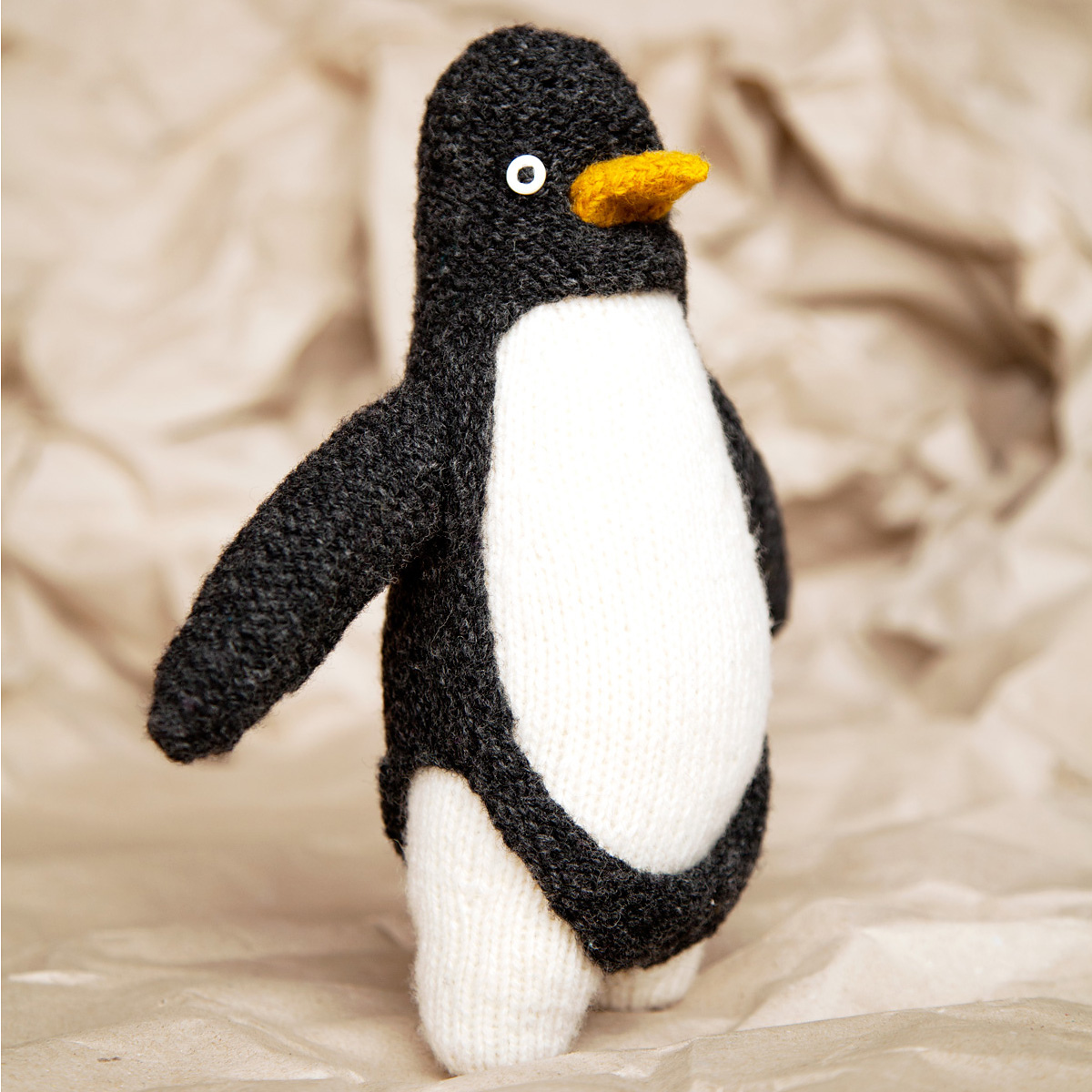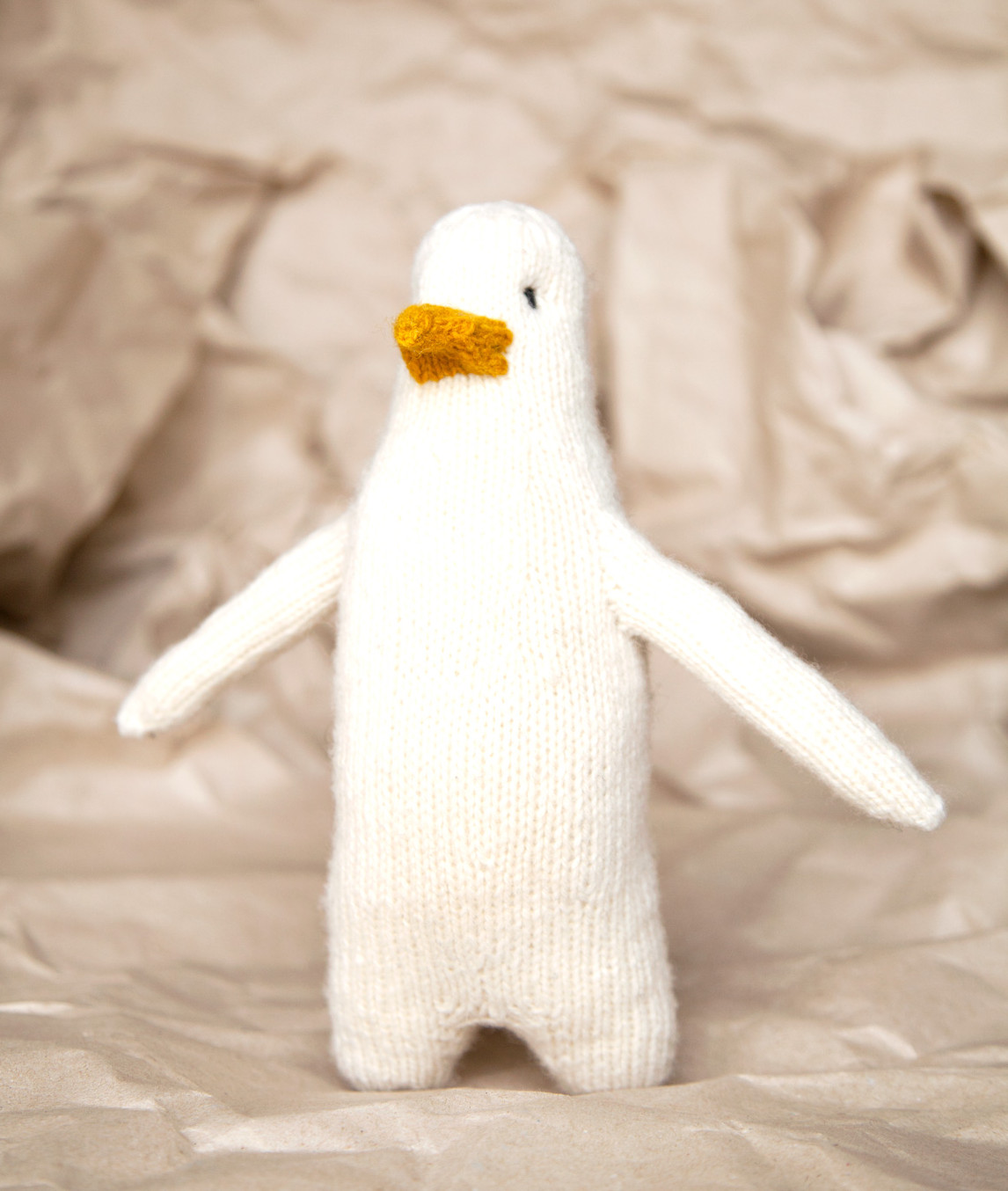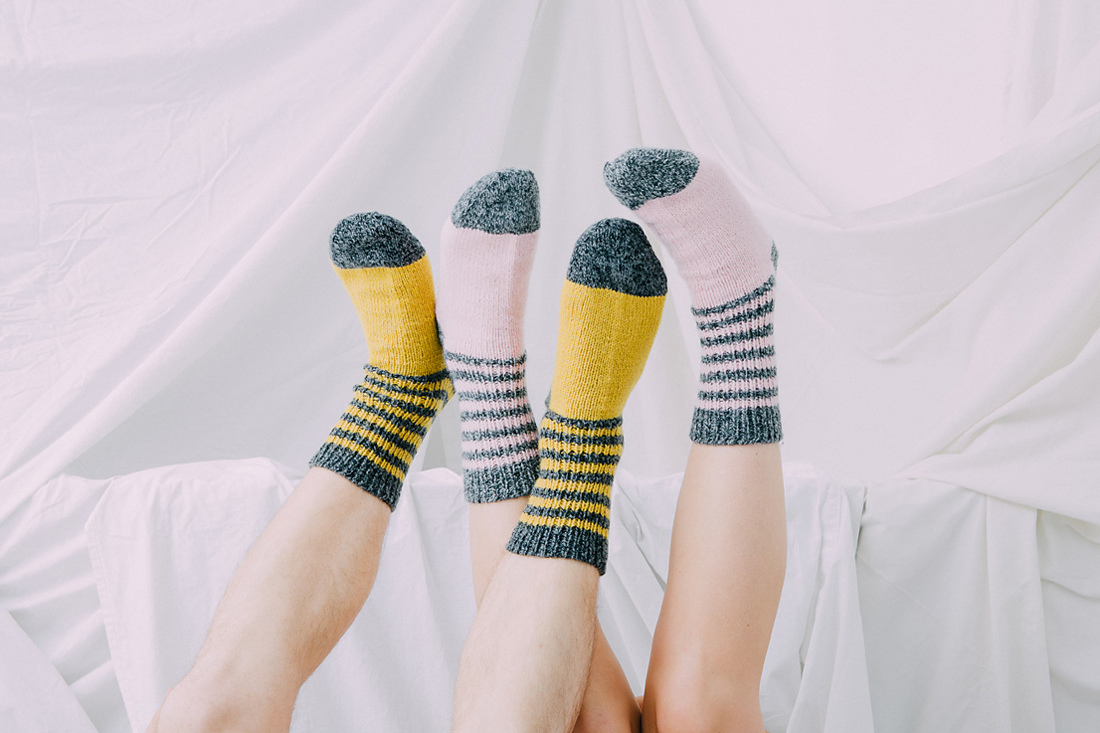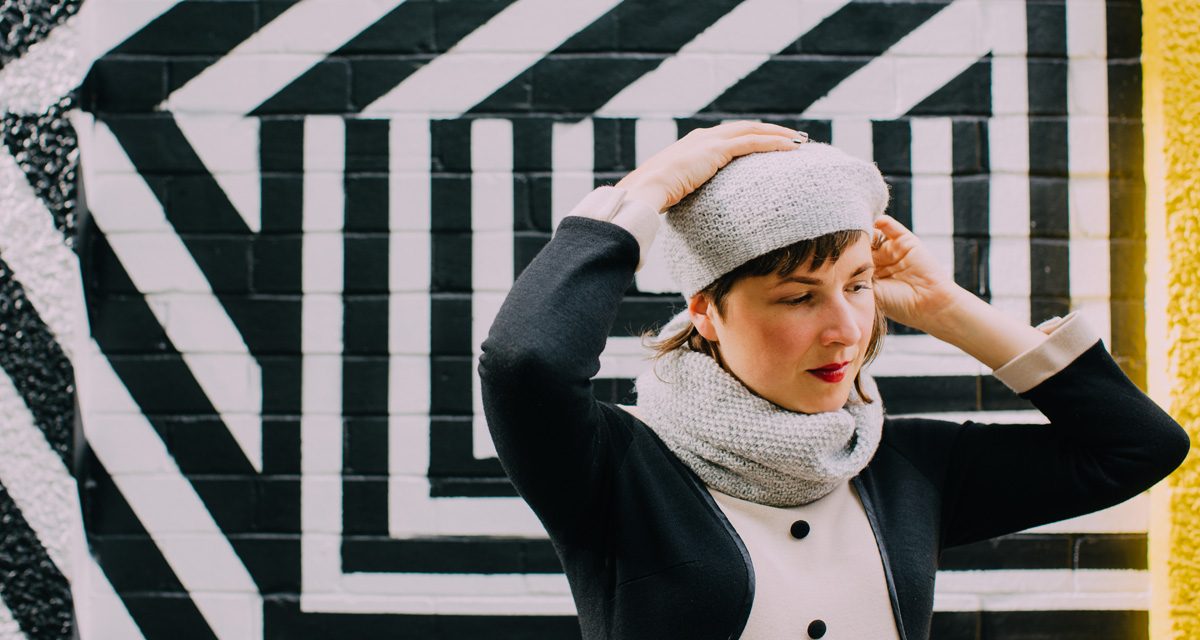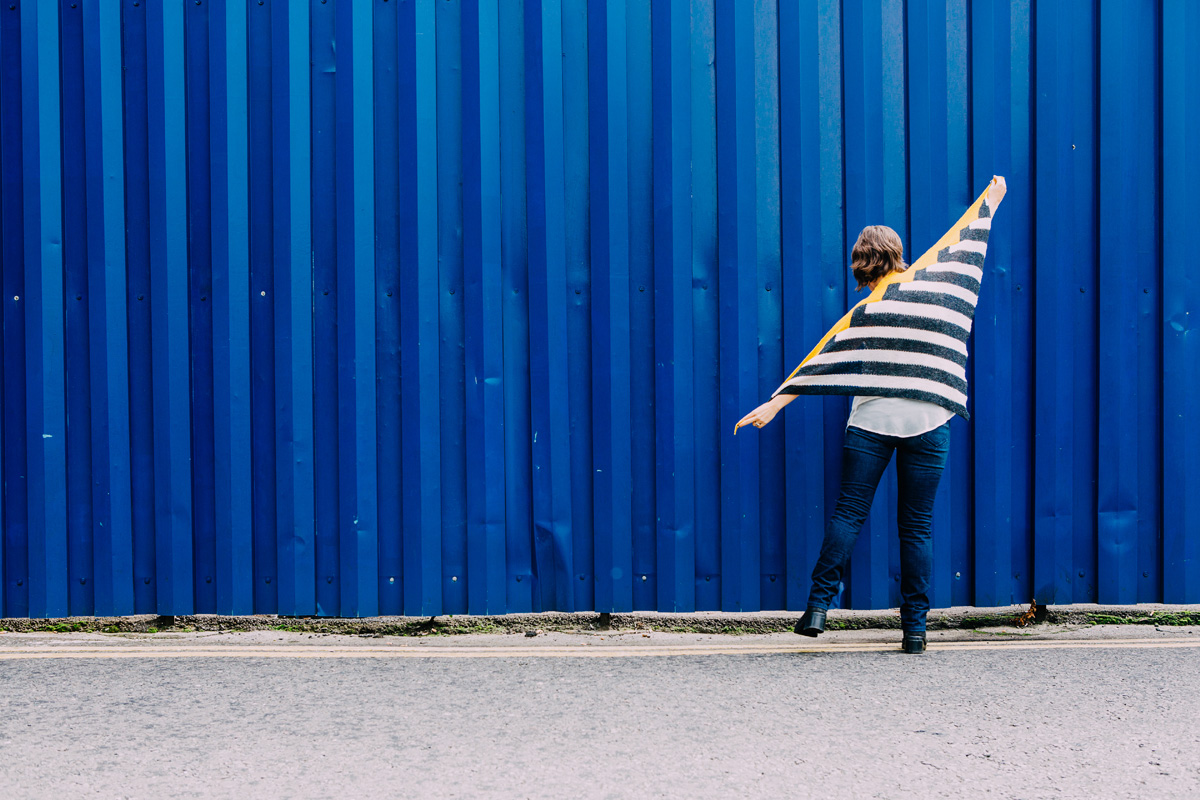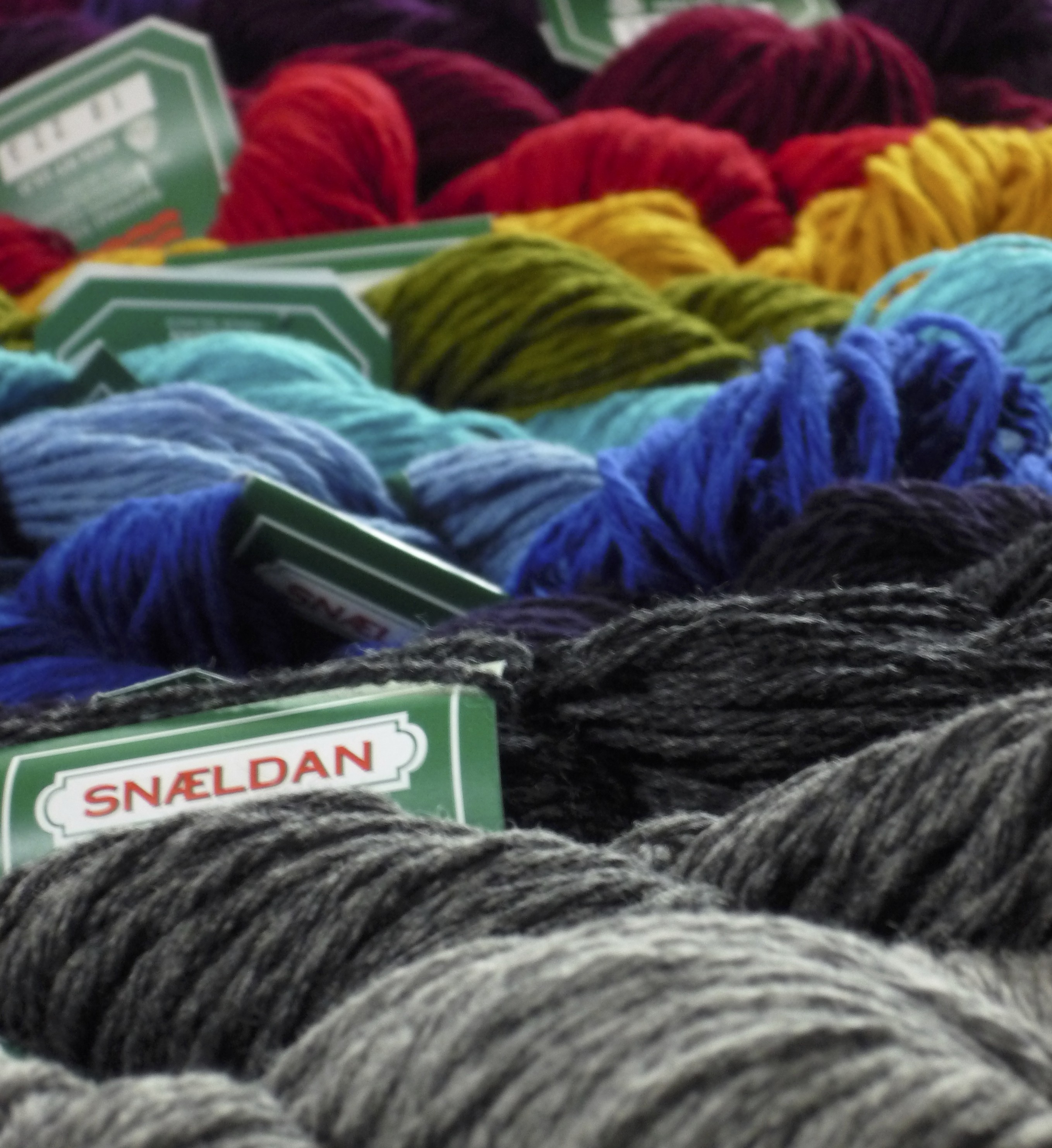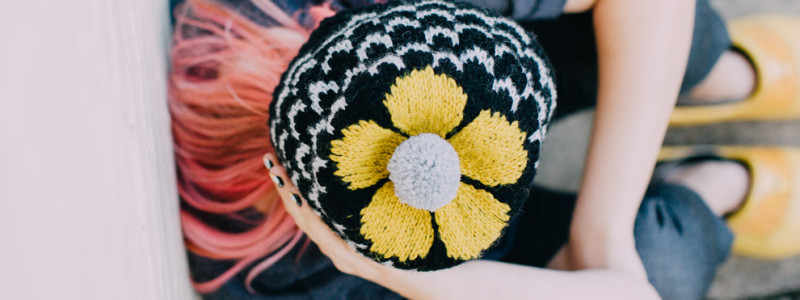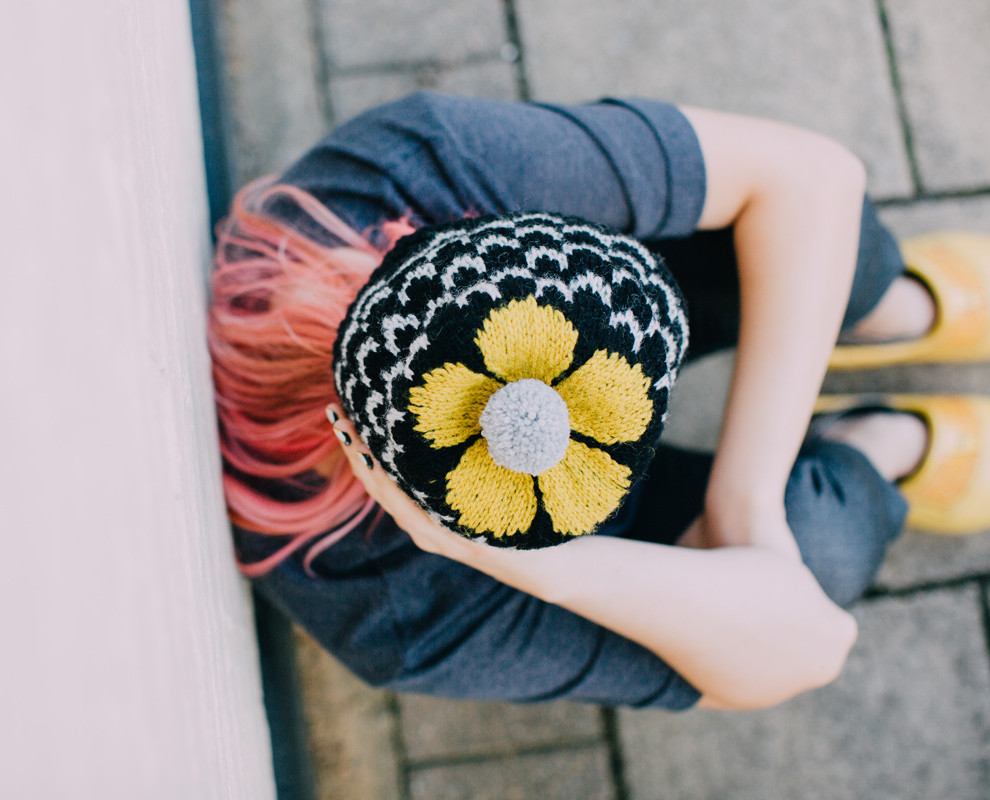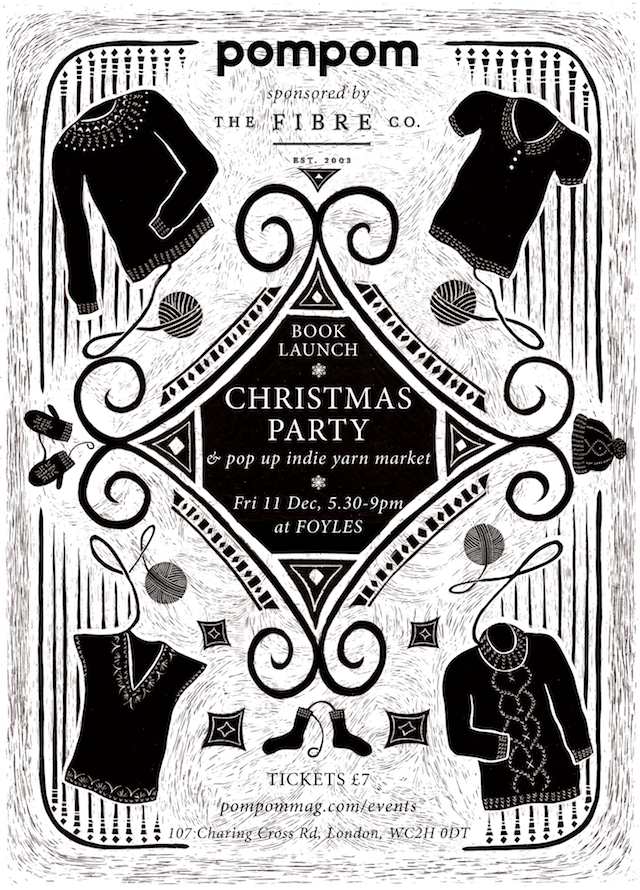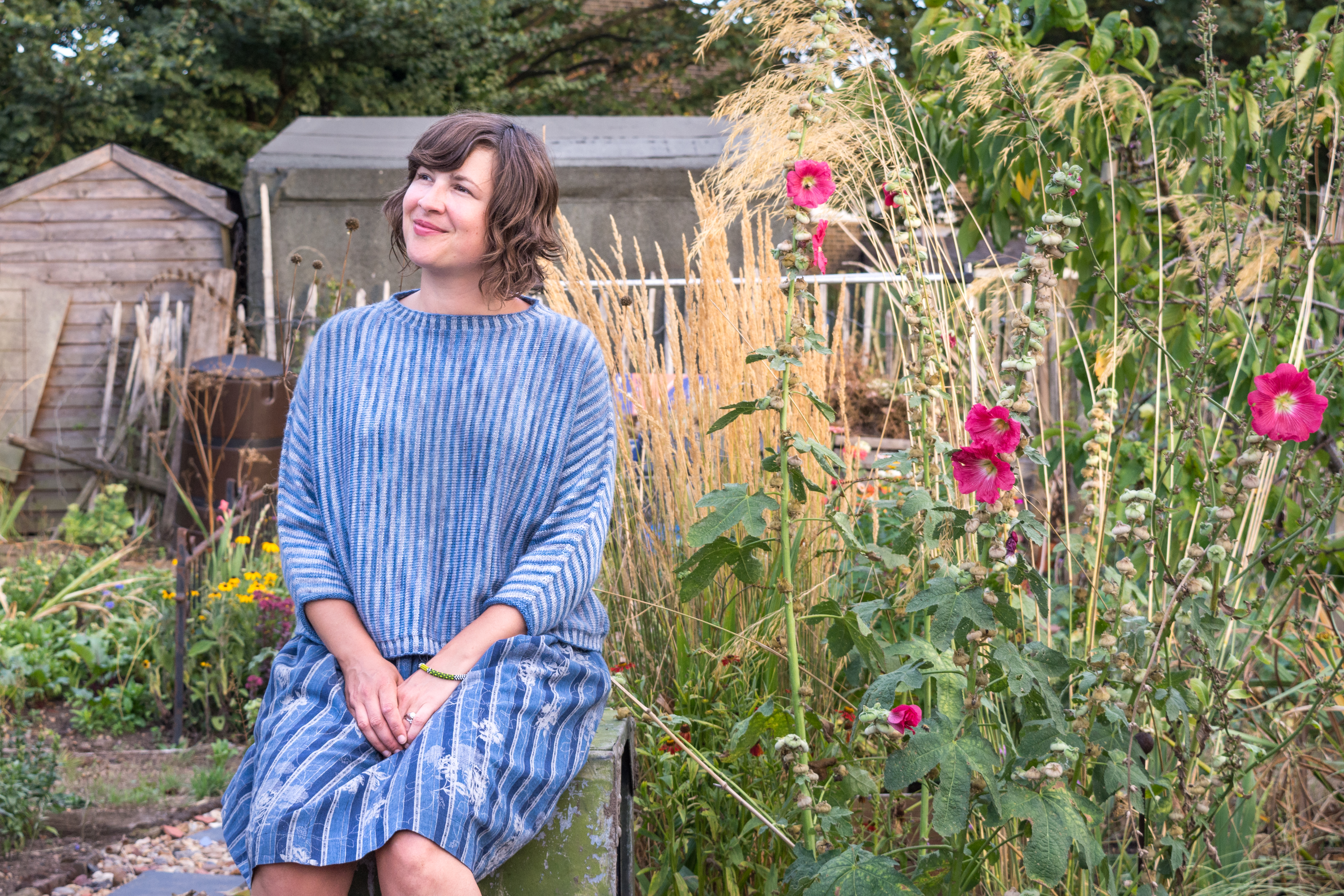
In the spirit of clearing up/out and getting things in order for whatever is next, here are some notes I’ve had half-typed up for a good long while. More than five years ago and possibly less than ten, I was given a knitting machine by the neighbour of friends – she had dementia and no longer had the capacity to use the machines. She could still remember what belonged with what. In this way I got a standard gauge Brother machine, the machine knitting section of her bookshelf and a Hague Linker (a blue thing on a tripod that she knew I needed, but not what it was anymore – at the time, I had NO idea). It seemed respectful to learn what to do with all of it. Up until then I’d had the standard hand knitters’ opinion that machine knitting was somehow cheating, in some dramatically different way than using a sewing machine, drill or blender. I took a year of machine knitting classes at Morley College on Fridays with Jo Thompson. It changed the way I knit and think about knitting, enriching my hand knitting and how I approached it, as well as adding a whole new set of skills and options provided by the machine. While the stitches formed by both hand and machine have the same structure, each can lend itself better to certain things. Some things are harder to do by machine that can easily be done by hand, and others harder by hand than by machine. And of course, there’s the time factor, which makes them very different beasts indeed.
For the most part, I now knit things by hand that don’t make sense on the machine. Certainly, I try to design hand knitting patterns that are intrinsically easier or indeed only possible by hand, with all the accompanying challenges and satisfactions. Yet, occasionally a pattern pops out that can be easily adapted to be made on the machine too.
My Halvis and Visser sweaters use the same basic construction, with subtly tweaked dimensions. Halvis is written to be worked in 4ply/fingering weight and Visser in DK/light worsted. It’s an unusual construction, which I hadn’t come across before, though all likelihood it was out there. I’ve certainly seen it adopted elsewhere since. I am especially proud of it, as not only does that make for an interesting knit (even for the seasoned knitters amongst us), but it importantly also looks good on the many different bodies I have seen versions on. Garments with sideways knit bodies usually rely on batwings to allow movement around the armholes. The inset Sleeves of Halvis and Visser, with the extra hidden ‘seam’, creates more structure that doesn’t slouch or ‘pull’ at the shoulders the way it can with a batwing. There’s also less ‘wing’, making it a shape less easy to date, and the decorative decreases along the top, rather than under the sleeves are fun and follow the body well. I wear mine for a comfortable, oversized fit, but this can be adjusted to personal taste.
Having knitted both a Halvis and Visser sweater by hand, I then made one of each using a knitting machine. By hand, it’s A LOT of stocking stitch, which, I know, at times/for some can be wonderful, repetitive yet productive, mindless/full satisfaction. As someone who knits as work, it just feels like, well, a lot of slow-going, work. Work that a knitting machine could do quicker.
I have no experience of following or writing patterns for use with a knitting machine. My intention is to give pointers to help you adapt my hand knitting patterns for machine, but you’ll need to rely on your own experience and smarts. And you’ll need to have bought the Halvis and/or Visser patterns for any of this to make any sense at all. You can find them for purchase here: Halvis and Visser.
These notes are not intended to be or replace the pattern in any way, but hopefully they make some sense and will help you with your own puzzling and calculations. They are also notes for myself, if I ever make more by machine (because, while I think I will remember, I won’t).
GENERAL POINTERS
– Just a little reminder, cause you’re on a knitting machine, not knitting flat by hand: you will always be working from the wrong side (aka. with WS facing), so adjust accordingly.
– You will still need to work the corrugated rib Neckband and Bottom Edge by hand.
TYPE OF MACHINE AND KIT
In terms of machines and accessories, I have both Brother standard gauge and chunky machines. I do not use a ribber (haven’t learnt how yet), so the following tips are based on using a single bed (with no ribber attached), and the standard transfer (1, 2 and 3 stitch) tools and latch hook that come with the machine. I also used scrap yarn for casting on and off (explained in ‘Scrap Yarn for Grafting’ below).
GAUGE
My personal handknit gauge ratio (stitches to rows) is close enough to match the knitting machine gauge ratio, so I was fine to combine machine and hand knitting. It also doesn’t bother me that the stitches worked on the machine are just slightly smoother than those I work by hand. After blocking and wear, the difference really fades away. And most folks looking wouldn’t spot it (or mention it if they did), and the folks who do, well, they’ve probably got bigger problems being them.
In other words, you gotta swatch for both hand and machine tension, if using both, so they match (closely enough). And make note of what they are somewhere you will for sure remember where, for future reference.
GAUGE FOR HALVIS
I worked my Halvis Body on a standard gauge domestic Brother (with no ribber attached).
– I set the tension dial to 7.
– I set the tension dial to 10 to work the cast-off row for the Upper Body (on Front and Back, that becomes one side of each armhole). Just remember to put it back to 7 after!
GAUGE FOR VISSER
I worked my Visser Body on a chunky gauge domestic Brother (with no ribber attached). It was a while ago (a few years), so I don’t remember the settings. I’ll add them if I make another one.
NUMBER OF NEEDLES NEEDED (AND SIZE RELATIONSHIP)
Depending on how many needles you have in the bed of your machine, you may not be able to work the larger sizes on the machine (without shortening the length of the Body (which could in turn be replaced with longer ribbing…)). To check, compare the number of needles you have on your machine with the greatest number of stitches you will need, as specified in the pattern. This will be the number of stitches that span the top of shoulder to the bottom edge. As long as your machine has enough needles for the largest amount of stitches – the drop from top of the shoulder to bottom edge – you are good to go with the numbers in the pattern, as is.
Maximum number of Body stitches needed for Halvis: 131 (133, 137, 143, 147, 153) sts.
Maximum number of Body stitches needed for Visser: 105 (110, 115, 122, 127, 134) sts.
WHERE ON NEEDLE BED TO CAST ON
Make sure to cast on the stitches far enough over, so that as you increase for the Underarm Shaping and Upper Body, you have sufficient needles available. To be sure, you could start at the very right edge of your needle bed (and always increase on the left side). I prefer to work as close to the centre of my needle bed as I can, so I did the little extra calculations to work out where on my bed to start, so I ended my final increase on the far left of my needle bed.
If you want to lengthen the Body (and have the spare needles in your bed to do so), cast on extra stitches at the start and maintain these throughout, keeping them consistently in the Lower Body. This is clearly explained and highlighted in the Halvis pattern and not hard to work out in the Visser pattern.
Sleeves should be placed centrally on the bed.
SCRAP YARN CAST-ON FOR GRAFTING
If you wish to graft the seam along the edge of the Lower Body (rather than mattress stitch it – both options given in patterns), cast on and off with a few rows of scrap yarn (say, at least 6) in a noticeably different colour. Use a smooth yarn you can easily pull out – I know my machines came with a really slippery line of nylon cording that can easily be pulled out. Then, graft together BEFORE unravelling or otherwise removing waste yarn.
LOSE THE GARTER EDGE
Do away with the garter edge. It is there as a guideline to make picking up stitches easier and neater, but it isn’t a necessity. A garter edge is easy to do when knitting by hand, but, while possible and not complicated, slows things down when using a knitting machine, for minimal benefit.
WORK STRIPES BY REMOVING AND REPLACING CARRIAGE
To work the 3-row stripes, I removed and replaced the carriage on the other side of the needle bed (quicker, safer and less fuzz-inducing than putting stitches on hold every few rows). Yes, it is a fiddle. I found it useful to put the guide rails on.
INCREASING
When increasing avoid creating an eyelet. I used the 3-st transfer tool. I transferred 3 sts over to the left to leave a needle free and then twisted the strand in between (using the single stitch transfer tool) and placed it on the freed up needle. I made sure to always twist each increase stitch in the same direction (to replicate the M1R on RS specified in the pattern).
DECREASING
Make sure all decreases will look the same on the RS, remembering that you are always working from the WS on a knitting machine. To decrease, so that the decreases work like a k2tog on the RS (p2tog is used on the WS) as specified in the pattern, I used the 1-st transfer tool to move the 4th st in from the edge, to the left, onto the 3rd st in from the edge and then used the 3-st transfer tool to move the edge 3 sts (including the doubled stitch) to the right, to close the gap.
ADAPTING SIZES
Just a couple of extra suggestions to make it fit how you need/like…
For a small increase, I’d suggest adding a Stripe each of A and B to Front and Back Necklines (+4 Stripes in total), which would widen the neckline a little. You would then need to add the extra stitches to the corrugated rib neckline (that will, ideally, be obvious how to once you get there).
You could sneak 3 extra Stripes in (colour order; B, A, B) in the straight section at the centre under each armpit (+6 Stripes in total). You would then need to pay attention to the knock-on effect on the armholes – Sleeves would need to be 6 sts bigger.
Add 2 Stripes (one each of A and B) on each Shoulder (+8 Stripes in total). If you wanted to keep the length true to the pattern, you’d need to shorten the Lower Body length to account for extra decreases that will be made, by transferring then from Lower to Upper Body, or add those extra stitches to the Upper Body.
ARMHOLES
Do not be tempted to leave stitches live on the Upper Body when creating the armholes for the Sleeves (whether by casting on with a provisional cast-on or not casting off). The specified ‘seam’ (picked-up-and-knitted into the cast on/off) is necessary for the structural soundness of the garment. Do make sure to cast on/off the stitches loosely around the armholes. Loosely, because when you pick-up-and-knit into them, these stitches need some space. For casting off, you can do this by increasing gauge on the row you will cast off (it’s standard to turn the tension dial up by 3). Just remember to return the dial to the regular setting afterwards!
WORKING THE SLEEVES
I used the machine to work the Bodies only, because I wanted to keep the Sleeves knitted in the round (by hand). In this way, the construction stays pretty much true to how the patterns are written. It is however possible to knit the Sleeves on the machine too. I haven’t tried it myself yet, but I’ve thought it through. I would suggest trying it as follows.
You can cast on the Sleeves as separate pieces to sew up and on later OR you can rehang the Body on the machine and work directly from it. If you wish to do this, do graft or sew up the side of the Lower Body BEFORE hanging on the machine to work the Sleeves, but do not sew up the Shoulder seams until AFTER. Re-hang the Body (from the armholes, with the underarm in the centre) on the machine to work the Sleeves directly from the Body.
Split the instructions for working in the round in the centre of the decreases. The decreases should be worked a couple of stitches in from the edges, in the manner used for the decreases on the Shoulders. Make sure to add an extra stitch at each edge, to give yourself a seam allowance (selvedge) along both edges of the Sleeve (these are not present/necessary when knitting in the round).
You want to keep the decreases where they are, running along the top of the Sleeve, because they are a decorative feature of the sweater. Also, I don’t suggest working the Sleeves with the seam under the arm, because, as the decreases run along the top of the Sleeve, NOT underneath, this would mean a ton of transferring of stitches, as the decreases would fall in the centre of the of the stitches being worked.
Once the Sleeves are complete, you will then seam all the way from the Shoulder (neckline edge), down the Sleeve to the cuff. Finally work the Neckband by hand.
Links to patterns:
Halvis
Visser


